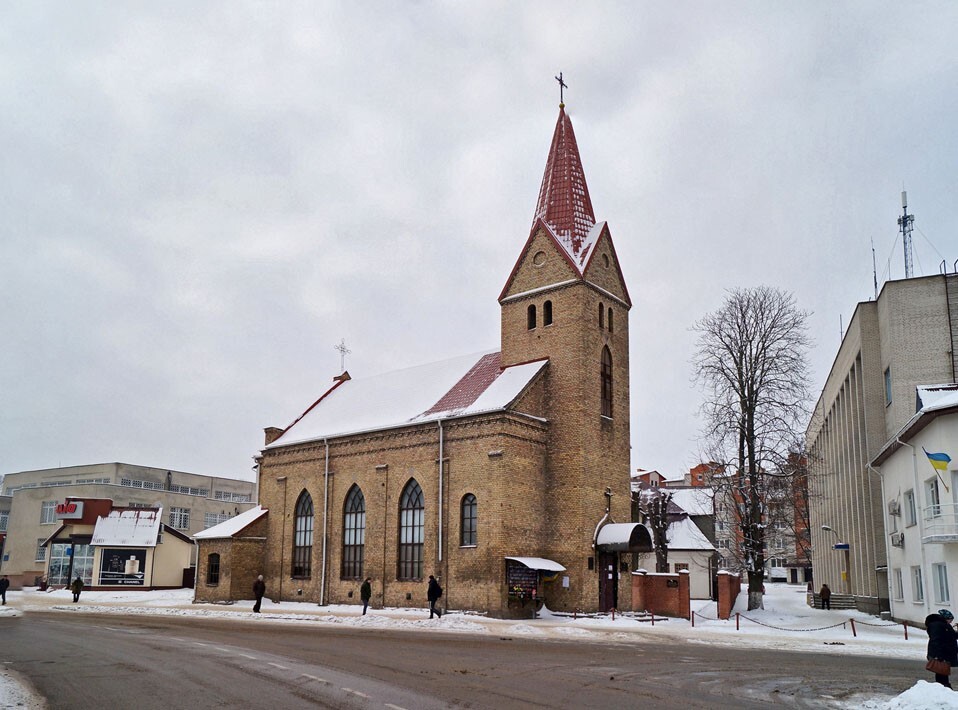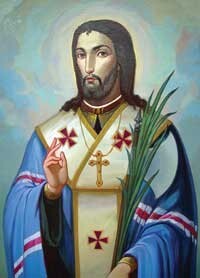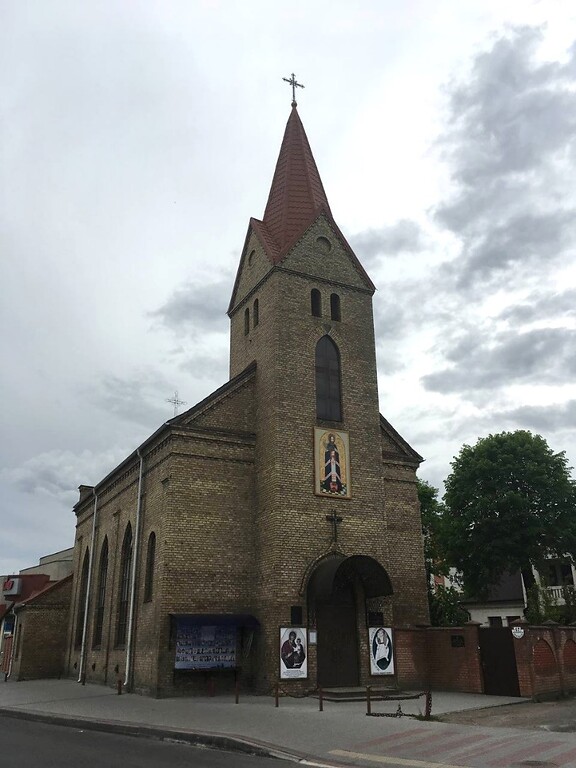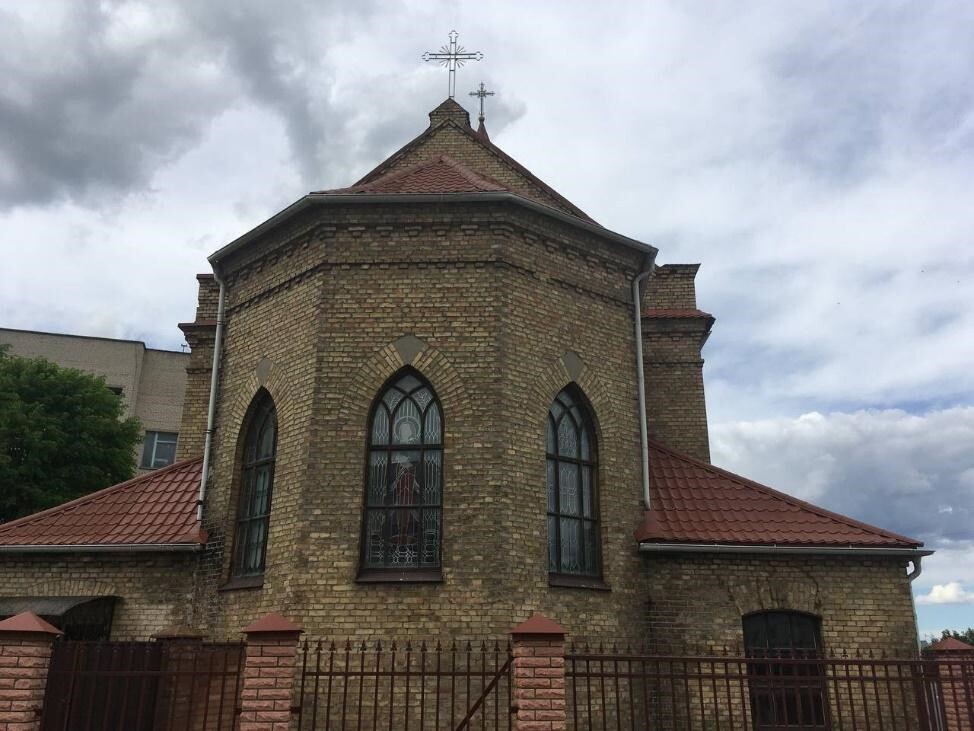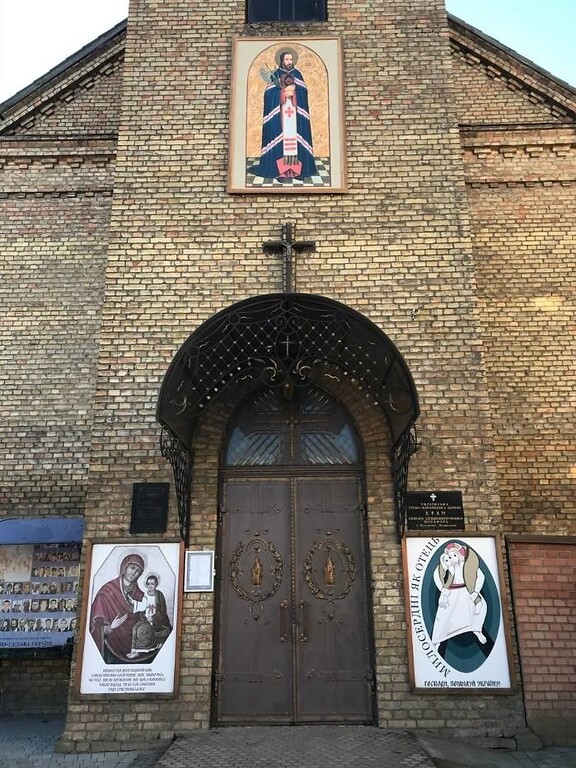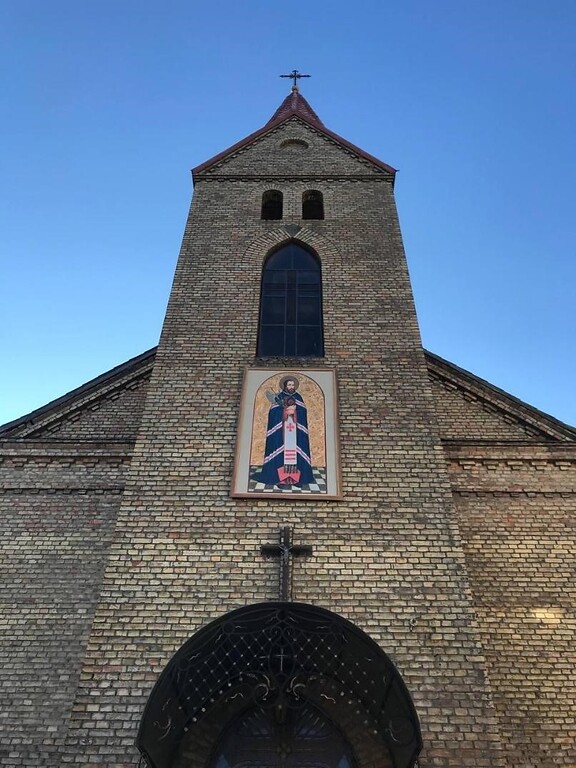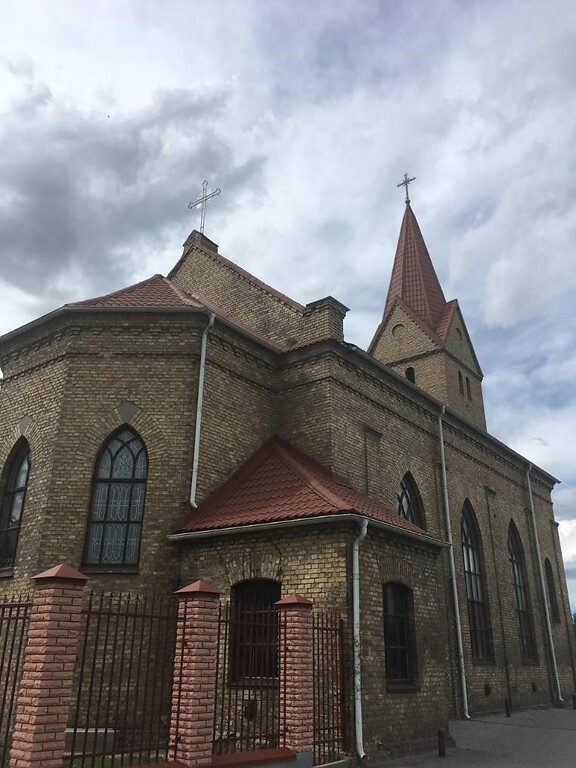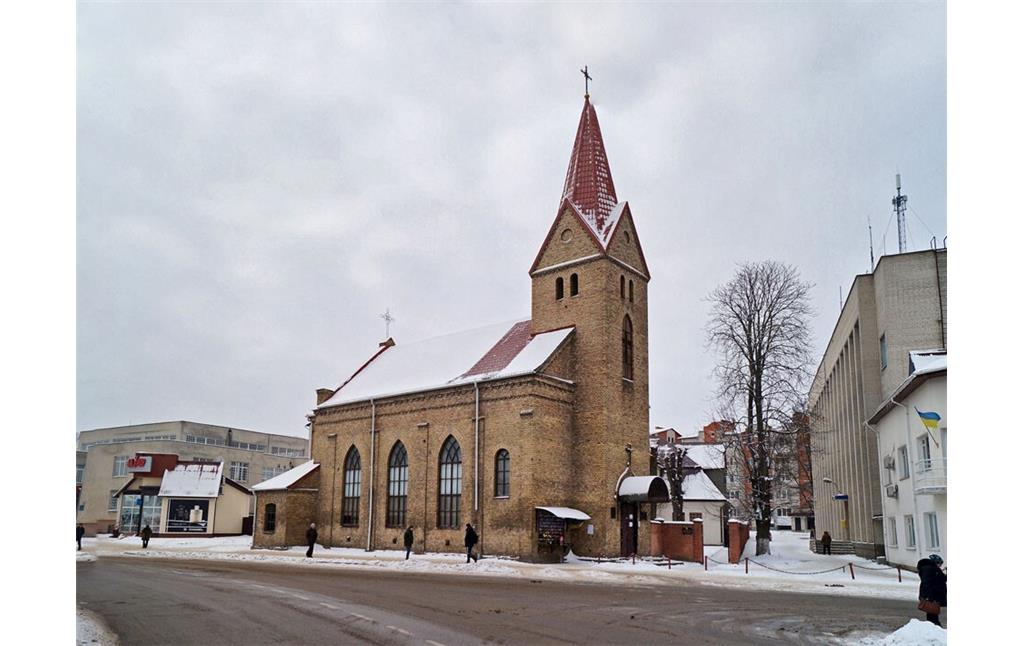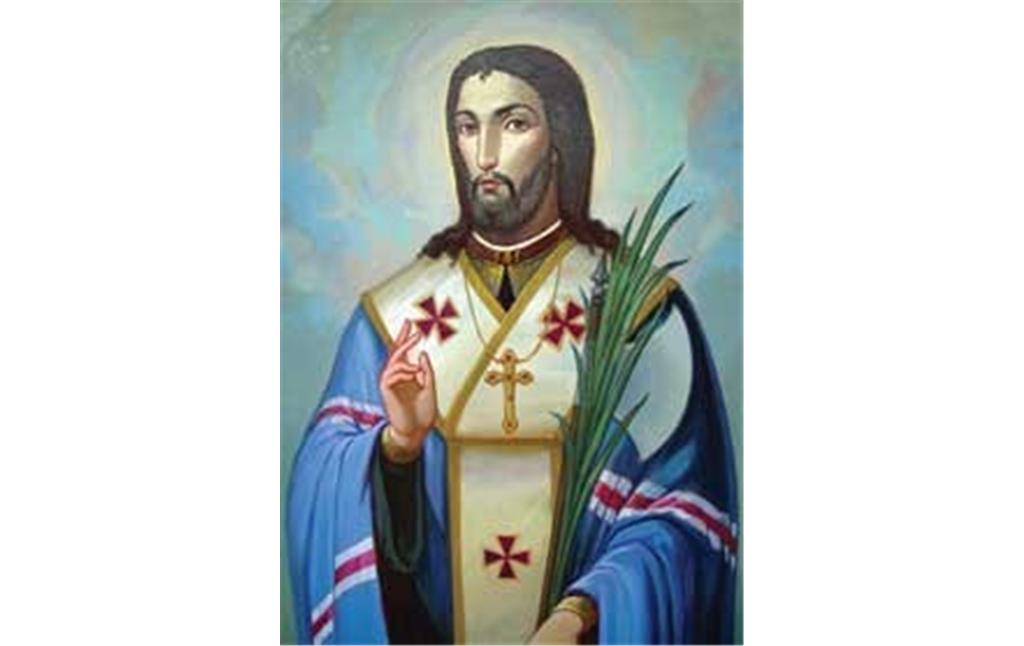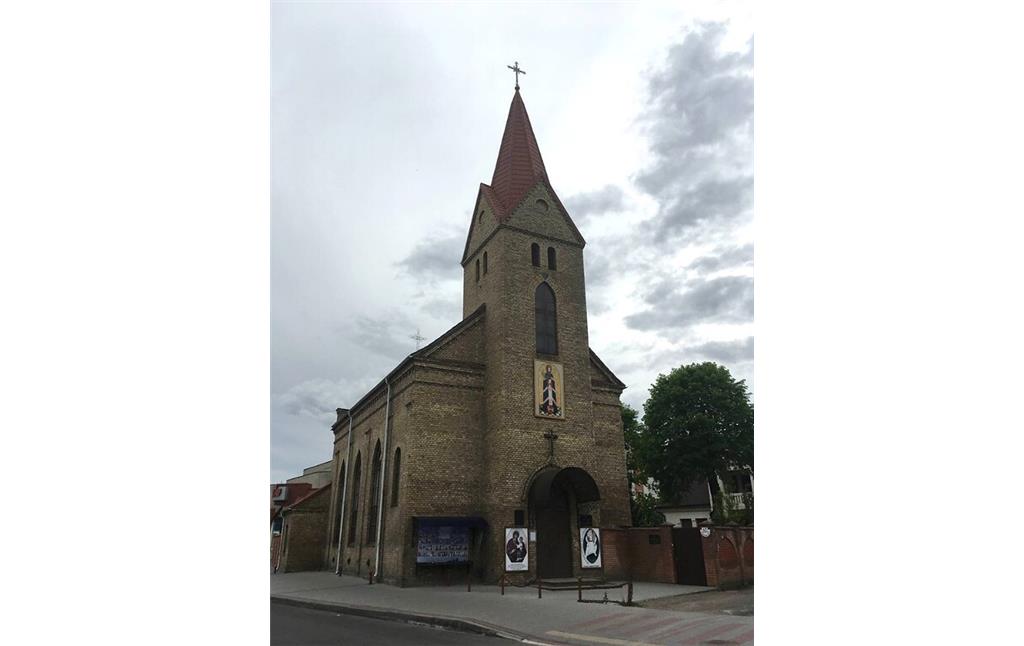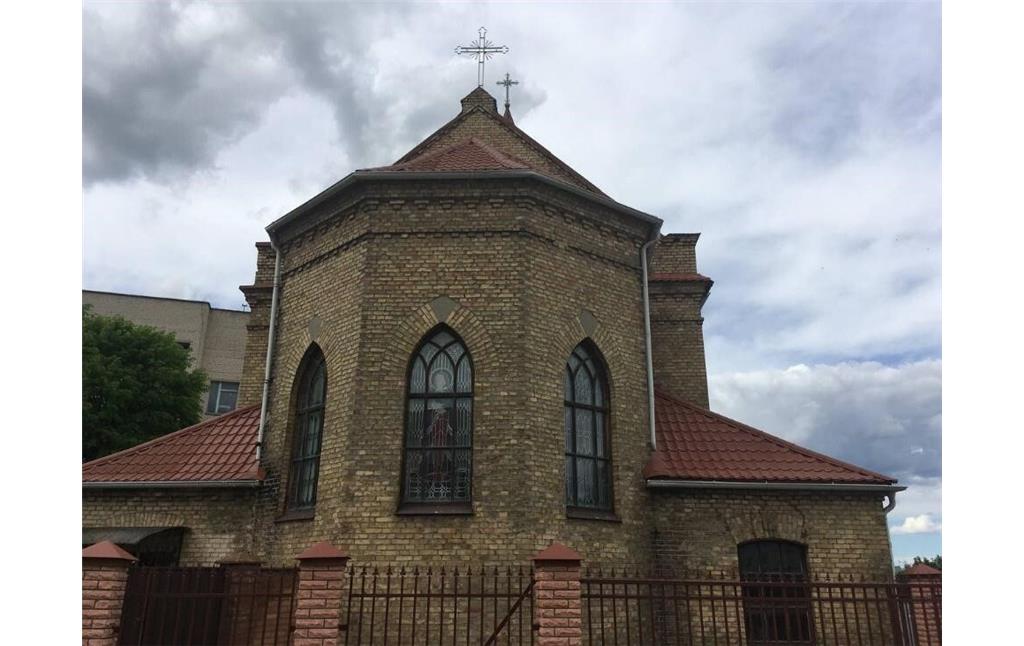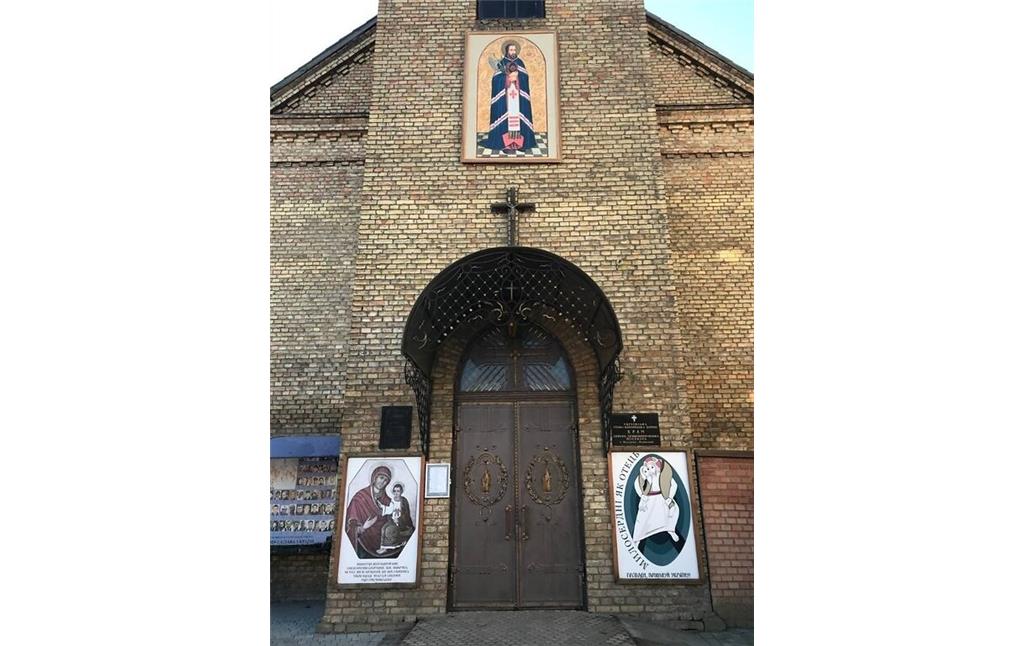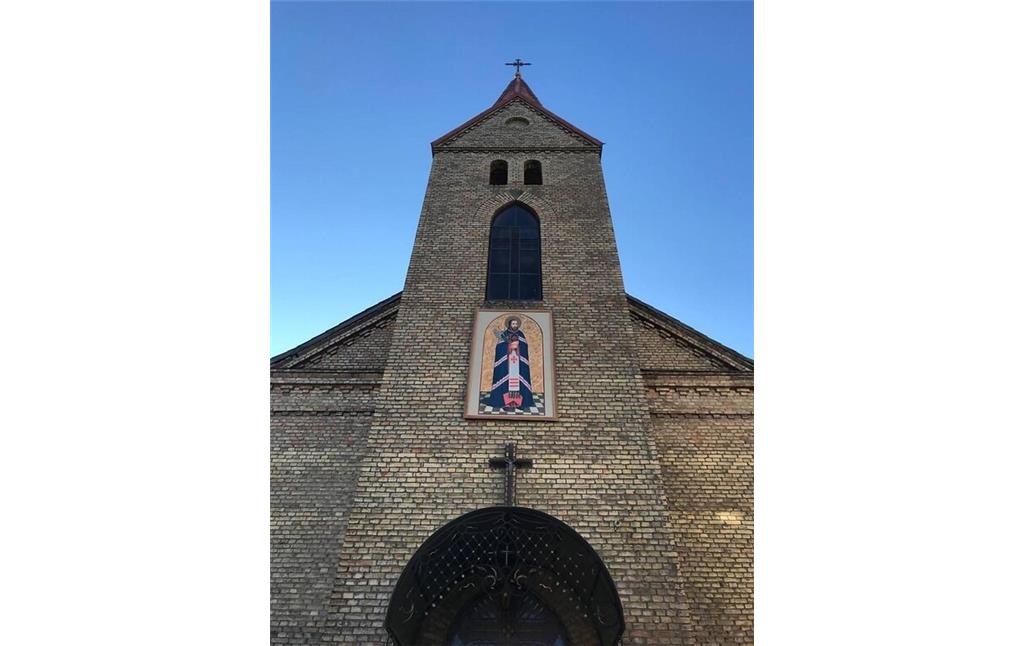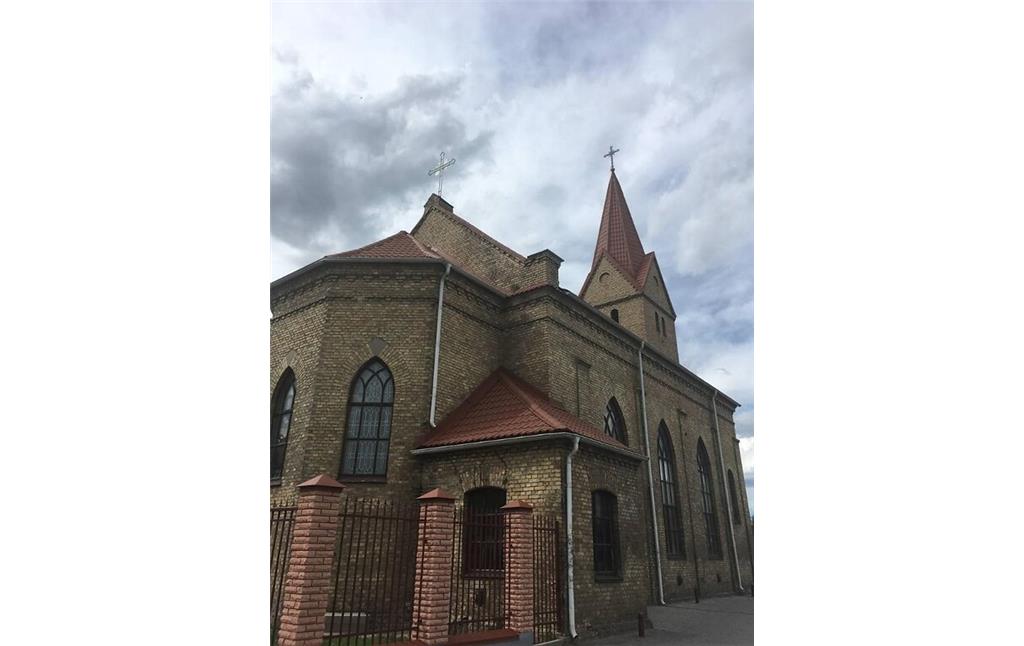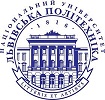
Six years later the Soviet authorities passed the building to the non-profitable organization which assisted the army, aviation and navy. By then it was used as a gym. When the Soviet Union collapsed, the church was used as an entertainment center and included a cinema and a disco for a while until the local Catholic community submitted the rules for the church.
Germans didn’t return to Volyn, so the former Lutheran Church was turned into the Greek-Catholic St. Josaphat’s Church. The priest’s house was rearranged as Vasilian Male Monastery. Vasilians were the Greek-Catholic monks, whose Order was founded in the 16th century by Ipatii Potii (1541-1613) in order to support The Union of Brest (1596).
The historic and cultural reserve „Ancient Volodymyr”, including St. Josaphat’s church as a local architectural monument, was created to protect and popularize valuable cultural inheritance.
The architecture of the church
The church was built in Neo Gothic style. The Gothic style first appeared in France in the 12th century and got its name after the tribes of Goths. Gothic temples are majestic and combine the best architectural, sculptural and painting achievements. There were also stained-glass windows. The main aim of Gothic churches was to affect people’s emotions and to show a person's nothingness compared to God. That’s why the spires of Gothic churches are very high. St. Josaphat’s Church in Volodymyr-Volynskyi consists of a single nave rectangular (30x10 meters) building with pentagonal apse and two parallel square sacristies on the sides. There is a double-tired bell tower above the narthex (the front part of the church), a hipped roof with its spires, round bell towers, tall keel-shaped and arched windows with frame bars, wooden arches of the sacristies, arched hall with the entrance cross and decorative eave make a unique evangelical image which distinguishes this church among others.
The church of St. Josaphat is a unique example of the chapel in Ukraine. A pointed spire of the church is noticed from any place in the town. Bright colors of the church make its special atmosphere. The church is similar to the buildings in Prague. Visiting this church, you can enjoy the Catholic Mass of the Eastern Rite and the beauty of the ancient building.
The life of Josaphat Kuntsevych (1580-1623)
Saint Josaphat is an outstanding person in Volyn, the greatest Saint of the Ukrainians. Ivan (Josaphat) Kuntsevych was a nobleman, a bishop of the Greek – Catholic Ukrainian Church, the archbishop of Polotsk (since 1618) and the founder of the Vasilian Monk Order.
Early years
Josaphat was born in Volodymyr-Volynskyi in 1580 in the family of burghers, named Havryil and Mariya. He was baptized in the local Paraskeviya Ioniyska Church. According to one source his father Havrylo was mentioned as a merchant and the local tradesman, in the other one - as a tailor. His mother’s name was Maryna. Josaphat was baptized as Ivan.
His strong desire to pray and the imposing character made him special since his early years. Josaphat finished the church school in Volodymyr.
During the 16th and 17th century, the town of Volodymyr was a great trade center. There were numerous craft corporations, called guilds. The goods of the local craftsmen were known for their high quality and were exported to European countries. An international fair market took place three times a year in Volodymyr-Volynskyi. That’s why Ivan’s father wished his son to become a merchant. After the Brest Union in 1596 his family moved to the city of Vilna (today: Vilnius, Lithuania). His father’s plan didn’t work as Ivan decided to become a monk.
The Vilnius Period
In Vilna, Ivan was apprenticed to the local merchant and due to his contacts with Petro Arkudiy (1562/1563-1633; Ipatiy Potiy Bishop theologist), Jesuit professors of the Vilnius Academy Valenta Groza-Kovalski (Fabricius) (1565-1626) and Yan Gruzhevskyi (1580-1646), who helped him increase his level of knowledge. He knew the Polish language, but he didn’t know Latin.
In 1604, he entered the Vasilian Monastery of the Trinity Church in Vilno, Grand Duchy of Lithuania. Then he was given the religious name of Josaphat. As a cleric, he studied theology under the supervision of the Monastery School rector, later in 1607 he continued his study with Josyf Veliamyn Rutskyi (1574-1637) and Jesuits of the Vilno Academy.
At those times he wrote seven polemic works about the necessity of the Eastern Catholic monastic life revival under the direction of the pope of Rome. He preached to convert a lot of people to accept the Union of Brest.
In 1609, Josaphat was ordained a priest by the Catholic bishop. He subsequently became the head of the novitiate – the trial period for the Catholic monks.
The early working years
Since 1607, Kuntsevych along with Josyf Veliamin Rutskyi had regularized the monastic life, reorganized the monastery and introduced strict discipline among the monks. In 1613 he was appointed Archimandrite by the Greek-Catholic Metropolitan of Kyiv Josyf Veliamin Rutskyi. In 1614 they went to Kyiv in order to convert Orthodox Christians to the Union. In the Pechersk Monastery he insisted on the advantages of the Union and made speeches, which got the monks angry. He was beaten fiercely, afterwards everybody came to agreement. At those times Josaphat Kunchych nobilized his name and started to call himself Josaphat Kuntsevych. Due to his personal contacts, he got a lot of donations from Rus’ nobles in order to build new schools and monasteries. Because of the monks’ quantity, he moved the novitiate from Vilno to Byten, which is close to Slonim (today in Belarus).
Polotsk Period
In the end of 1617, he was consecrated as the coadjutor archeparch for the Archeparchy of Polotsk (in Vitebsk/Belarus). First, he succeeded in renovation of the churches including the Saint Sophia Cathedral in Polotsk. He also opened church schools and reorganized clergy. Then he proved himself to be a great supporter of the Orthodox and Catholic Churches Union. But there was opposition to his activity. In November 1618 Josaphat couldn’t visit the city of Mohyliov, as the authorities closed the main gates and threatened to kill him. Kuntsevych complained to the King of Poland Sigismund III Vasa (1566-1632) about that case. The rebellious town was punished: the riot leaders were executed, the citizens of Mohyliov were fined and all the Orthodox Churches were confiscated. During the next six months church services were allowed, trying to persuade people to join the Union. But nobody did. Then Kuntsevych expelled all Orthodox priests from their churches. He thought all the dissenters and schismatics were offending God during the services. Only the Catholic priests were allowed to work and the churches were opened only for the Catholic services. Kuntsevych believed he defended his rights to the church.
Josaphat’s Death
The reason of the Kuntsevych’s murder was the arrest of the last Orthodox priest named Illia. Despite the prohibition, he continued to hold Orthodox services clandestinely in the suburbs. On November 12, 1623 the priest was roaming around the bishop’s residence too much, so he was caught by the guards. Later Kuntsevych let him go but the arrest was considered as an act against the Orthodox Christians. The furious crowd broke into the bishop’s residence and killed him. The bleeding body of the bishop was dragged through the city of Vitebsk to the Western Dvina and thrown into the river.
According to the witnesses, while the archbishop was being attacked and also while his body was being taken out of water some mysterious lights appeared. A resident of Vitebsk, Hryhorii Pestrets, who was Calvinist-Protestant, wrote: “Although I am a Calvinist, I feel guilty and I believe that was a miracle. Two more witnesses besides me saw a cloud of fire above the bishop’s house, where he lived. It had been there for a half of an hour and when the bishop was murdered it disappeared.” One more resident of Vitebsk, Naum Vovk, said he saw the mysterious light above the river, where the Lord’s servant had been drowned. Vovk didn’t believe that at first, so one night he went to see that light by himself. He saw the flash was coming inside the water. Josaphat's body had been in the Dvina River for five days. The city of Vitebsk was in mist all that time. The sun was finally rising after his body was taken out of the water.
The Josaphat’s Works
Kuntsevych is the author of numerous polemic works such as „About Slavic Letters Falsification”, “About St. Paul Superiority”, „About Volodymyr the Great’s Baptism”, “Catechism” and others.
All Catholics in Ukraine celebrate St. Josaphat the Martyr Holiday. People commemorate St Josaphat as he was the apostle and martyr who gave his life for the Church Union. Not only Ukrainian Catholics but also Catholics all over the world commemorate this saint, pray for him and build churches named after him. The relics of St. Josaphat are kept in St. Apostle Peter Basilica in Rome. Josaphat was the first Ukrainian saint canonized by the Catholic Church (1867).
Internet sources:
en.wikipedia.org: Josaphat Kuntsevych
sde.org.ua: „In the darkness of the earth the Light shone ...“
zabytki.in.ua: Lutheran Church of Volodymyr-Volynsky
(Yulia Karpiuk Lviv Polytechnic National University, 2021)
